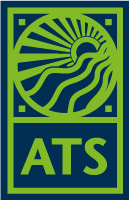
Water Filtration Systems
ATS can supply water purification and treatment to meet the most stringent standards. Technologies range from filtration systems, reverse osmosis units and water softeners to other systems for de-ionisation, de-alkalisation nitrate removal and organic scavenging.
Water Filtration Systems
 Filtration systems can be provided for the removal of undesired substances from well and surface water. Systems specified will obviously depend on the condition of the water source, and the use to which it will be put – drinking water will obviously require more extensive treatment than process water.
Filtration systems can be provided for the removal of undesired substances from well and surface water. Systems specified will obviously depend on the condition of the water source, and the use to which it will be put – drinking water will obviously require more extensive treatment than process water.
Standard units can be supplied for volumes up 300m3/hr, and more specialised variants are available for removal of iron and manganese, neutralisation of acidic waters and removal of colour, odour and taste.
Water Softeners ATS can supply water softeners ranging in capacity from 160litres/hr to 100,000litres/hr. Based on the ion exchange principle they are suitable for applications as diverse as domestic and commercial dishwashers, steam-raising plant, humidification systems and cooling towers.Simplex, duplex or triplex systems based on timer or meter control of the regeneration process can be supplied.
ATS can supply water softeners ranging in capacity from 160litres/hr to 100,000litres/hr. Based on the ion exchange principle they are suitable for applications as diverse as domestic and commercial dishwashers, steam-raising plant, humidification systems and cooling towers.Simplex, duplex or triplex systems based on timer or meter control of the regeneration process can be supplied.
Reverse Osmosis Systems
 RO systems can offer significant advantages when compared with more traditional distillation and ion exchange technologies. These range from lower capital costs, right through to significant environmental benefits.
RO systems can offer significant advantages when compared with more traditional distillation and ion exchange technologies. These range from lower capital costs, right through to significant environmental benefits.
ATS can supply RO systems that will treat up to 360m3 per day. Various options are available to tailor the systems to the customer’s specific requirements, including:
- Pre-filters – including activated carbon – for particle and chlorine removal
- Pre-treatment chemical dosing or ion exchange systems to reduce water hardness and protect the membrane from fouling raw and treated water tanks and pumping systems
- Post treatment to ensure compliance with the highest chemical and microbiological requirements, for example, mixed bed polishing and UV-sterilisation
Systems are equipped with a microprocessor control unit for automatically controlling and managing the complete operation of the plant. Consequently, full control of the water quality and quantity are achieved. Programme cycles are managed to optimise on membrane performance and efficiency. Alarm outputs are available to link with any computer-
